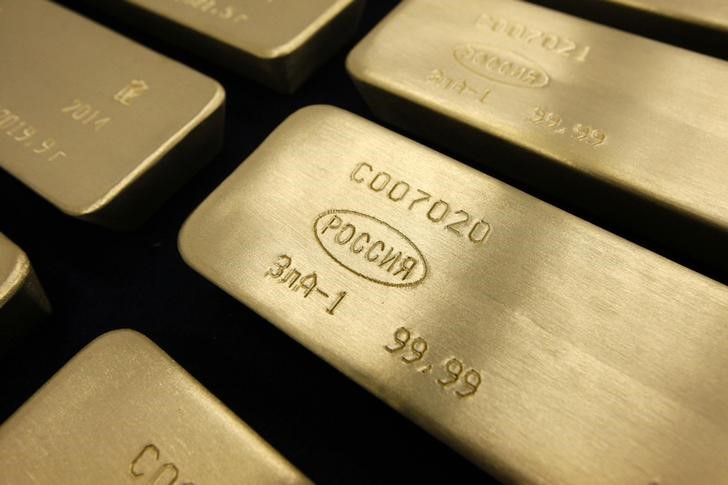Investing.com — Gold prices steadied after mild overnight gains on Wednesday as investors hunkered down before the minutes of the Federal Reserve’s June meeting, while copper prices ticked lower amid fears of a renewed U.S.-China trade war.
The yellow metal staged a small recovery over the past three sessions, after plummeting below the $1,900 an ounce support level last week. Fears of rising U.S. interest rates were the biggest source of pressure on gold prices.
steadied at $1,926.38 an ounce, while were flat at $1,933.85 an ounce by 20:26 ET (00:26 GMT).
Fed minutes in focus as markets watch for July rate hike
Focus was now squarely on the , for any more cues on the path of U.S. interest rates. While the central bank had kept rates on hold last month, it had also flagged at least two more hikes this year, given that inflation still remains high.
Fed Chair Jerome Powell also reiterated as much in a series of testimonies and addresses over the past two weeks.
Markets are the central bank will raise rates by 25 basis points later in July. While recent data showed that overall U.S. inflation declined, core inflation still remained sticky and well above the Fed’s target range.
The trend points to more pressure on gold in the coming months, although expectations of a potential U.S. recession have also driven some safe haven demand for the yellow metal.
Analysts at IG said that they would move to a positive bias for spot gold if it could reclaim a resistance level between $1,925 to $1,935 an ounce.
Copper edges lower as U.S.-China trade tensions rise
Copper prices remained under pressure on Wednesday after major importer China blocked the export of some gallium and germanium products – which are key ingredients in the chipmaking process – to the U.S.
fell slightly to $3.7855 a pound.
China’s move, which was in retaliation to measures by the U.S. to block Chinese access to key chipmaking technology, fueled concerns over a bigger trade conflict between the world’s largest economies.
Specifically, investors feared more disruptions to global supply chains, especially if China blocked the export of rare earth minerals – of which China is the world’s largest exporter.
The move also comes at a time when China’s economy is on the ropes, as it struggles to recover from three years of strict anti-COVID rules. Any further headwinds to the Chinese economy are expected to weigh on its appetite for copper.
Data on is also due later on Wednesday.
Read the full article here





